Source: SlashFilm
Published and curated from SlashFilm Read More
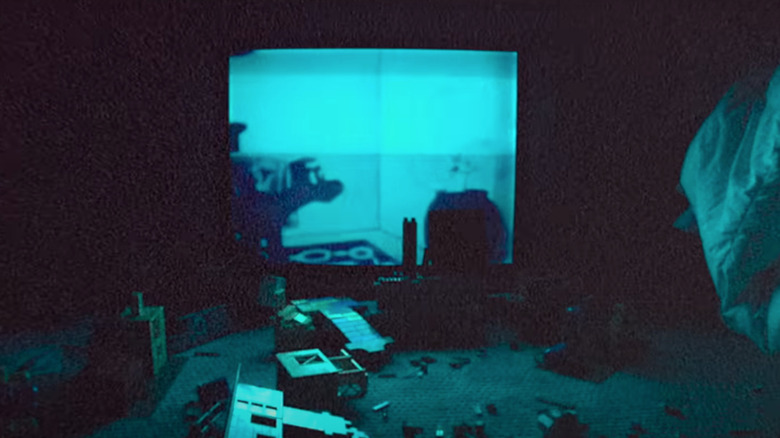
This post contains spoilers for “Skinamarink” and the short film “Heck.”
“Skinamarink” feels like something seminal. Kyle Edward Ball’s micro-budget horror effort is officially out in the world and already on its way to making $1 million at the box office. Which is frankly just an amazing accomplishment for a movie that cost $15,000 to make and was shot entirely in Ball’s childhood home. But beyond its box office, “Skinamarink” feels like a transitional step in filmmaking for the way it’s taken the principles and aesthetics of analog horror and made something with a wider cultural reach.
Up to this point, aside from one season of a recently canceled Netflix show, analog horror has been mostly confined to an online audience, with YouTube series such as “Local 58” or “The Mandela Catalogue” simultaneously mesmerizing and terrifying viewers over the past decade. Usually these projects rely on some sort of conceit — you’re watching footage from a TV station or recently unearthed VHS tapes. In that sense, there’s an intellectual component to them before they’ve even begun. But “Skinamarink” does away with a clear conceit in favor of a truly immersive experience, heightened by its unique visual style.
With that said, many have accused the movie of focusing too heavily on atmosphere, overlooking any sort of narrative in the process. But beneath the film grain and heavy analog vibe, “Skinamarink” is clearly telling a story, and the internet is teeming with interpretations of it. Viewers have offered multiple theories for the film’s events and generated some fascinating ideas in the process. So fascinating, in fact, that I’ve taken the liberty of compiling them here so we, too, can wander through the dark house and try to figure out just what in god’s name is actually happening in “Skinamarink.”
The Director Isn’t Even Sure What’s Happening
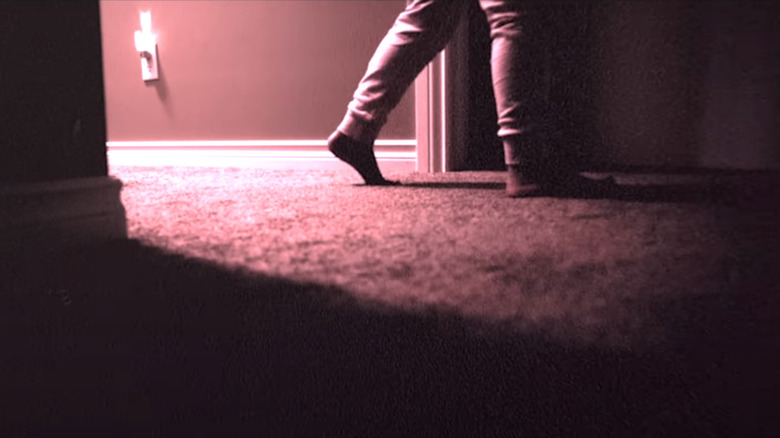
Ball’s film gives us very little in terms of context, offering only a title card that informs us it all takes place in 1995, before undermining even that seemingly concrete information by using a degraded filter and film grain to give the whole thing a ’70s vibe. The setup is simple. Two young siblings, Kevin and Kaylee, awaken in the night to find the doors and windows of their house have disappeared. They set up camp in the living room to watch their favorite cartoons before being increasingly menaced by a malevolent entity that never quite shows itself, instead taunting the children by way of whispered threats and invitations to do unspeakable things. It’s all very mysterious, and intentionally so.
Ball has been asked a lot of questions recently about the specifics of “Skinamarink” and its plot. Fangoria had a go at getting something out of him, asking if he actually had any idea what was going on in the house, to which he replied:
“There are many parts of the movie where I have a set idea of what the monster is doing and what’s happening to a person, and why. I’m not going to say what those are, but yes, there are some concrete things I have in my mind, and there are other parts where I don’t even know the answer. Like the look-under-the-bed scene. I don’t know where a lot of that came from.”
If nothing else, Ball at least gave us a way to think about that evil entity lurking in the house’s shadows, which will henceforth be known as “The Monster,” though exactly what kind of monster we’re dealing with remains as ambiguous as the hazy shapes hidden in the dark corners of Kevin and Kaylee’s home.
Heck And Neverending Consciousness
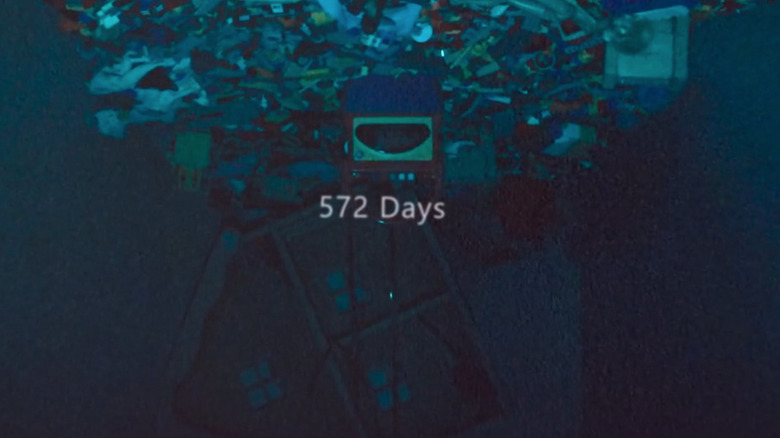
As “Skinamarink” goes on, the surreal atmosphere intensifies. Early moments are full of oddly framed parts of the house — a power outlet, light fixtures, barely lit corners of a room — but there is at least some semblance of reality there. It’s a feature of analog horror, used to great effect by Ball, to use recognizable technology and objects. Whether it’s the CRT TV, lego blocks, or even the wood paneling on the walls of the home, “Skinamarink” is scattered with fragments of familiarity.
But as things progress the images become more and more surreal and unsettling: Distorted faces in family photos, an expansive shot of a home surrounded by blackness, cryptic text that reads “572 days.” The effect, aside from being downright chilling, is disorienting. But there are perhaps a few clues as to what’s going on in Ball’s short film “Heck.”
The half-hour proof of concept for “Skinamarink” also features a child wandering his home at night in search of his mother who has seemingly vanished. Throughout its runtime, “Heck” provides a running total of how long the child has been trapped in this nightmare, eventually revealing that the child had cancer. Ultimately, he utters the devastating phrase: “I think we’re in hell.”
Commenter “CodeRed001” gave an insightful reading of the film which maps well onto “Skinamarink”:
“A lot of people are trying to associate real life concepts such as divorce or the way kids perceive things such as a home but I think it’s a much more straightforward nihilistic hell. What happens when we die isn’t known. In both films I believe we are witnessing what happens when somebody dies but from a young person’s perspective […] What if consciousness continued forever, and the home became a prison.”
The Monster
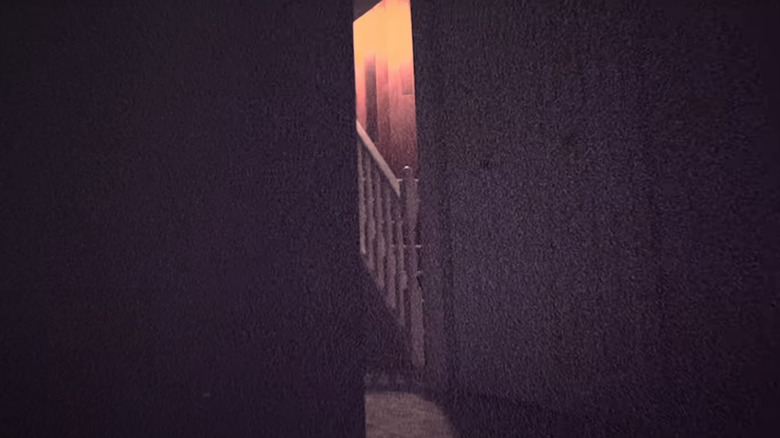
With “Skinamarink,” Ball was elaborating on the concept in “Heck.” But as our friend “CodeRed001” pointed out, the film, “Takes this to another level, where an evil entity lives in the house and seals the family in a pocket universe it controls.” YouTube user “Digital Apparition” also posited that this entity is learning as it goes — removing and levitating objects early on, before distorting reality entirely. One scene that ties into this theory is the “Looney Toons” cartoon loop sequence, where 1939’s “Prest-O Change-O” gets stuck on a section in which a rabbit makes itself disappear. As “Digital Apparition” sees it:
“The TV starts off just glitching — it turns off and on, it freezes on a particular frame of the cartoon. Makes me think of a very little kid messing with an old TV. Then, suddenly the paranormal TV occurrences shift — no longer is it just RANDOMLY freezing/turning off & on. Now something deliberate is being done. The entity appears to have figured out that it can ‘rewind’ things — time, perhaps?”
The monster then plays out its own twisted re-enactment later in the movie, where blood continuously splatters across the carpet only to disappear and reappear several times, all while a child’s screams can be heard alongside a warped version of the music from the “Prest-O Change-O” cartoon. Did The Monster try to recreate the disappearing rabbit scene in real life as some sort of horrific repeating death for Kevin? It’s a truly chilling moment and this idea of The Monster picking up ideas from the very things the children use for comfort and turning it against them keeps with the movie’s themes and the analog horror to which it’s indebted. It’s part of why “Skinamarink” is one of the scariest movies of the year.
The Doll House
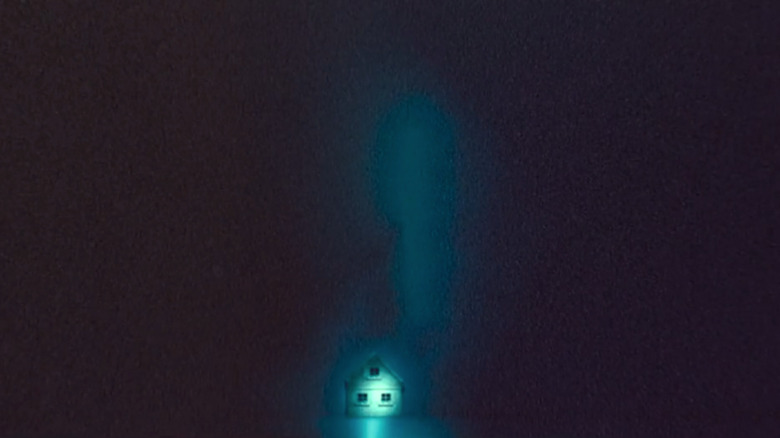
Elsewhere, this idea of The Monster toying with Kaylee and Kevin has played into yet another (slightly less plausible) theory — that the upside-down doll house shown later in the film, rather than being a metaphor for the way in which Kevn and Kaylee’s reality has been turned upside down, is literally where all the events of the film are taking place.
This, according to some, is the reason that objects, and eventually Kevin, end up on the ceiling — having literally been inside the doll house when it was turned upside down. There’s also that expansive shot of a home surrounded by blackness, which, according to the unfortunately named YouTube user “BeatBoxOnYourCooch,” “Could very well just be the darkness on the inside of a toy chest/box. Similar to the giant tub Kevin and Kaylee had their toys.”
It certainly ties into the idea that the children are merely playthings for The Monster, which at one point can be heard ominously intoning that it, “Wants to play.” It seems much more likely that Ball was using the doll house in a figurative way to represent the horrifying and upending experience being endured by the helpless kids. But it’s an interesting take nonetheless.
Kevin’s Coma
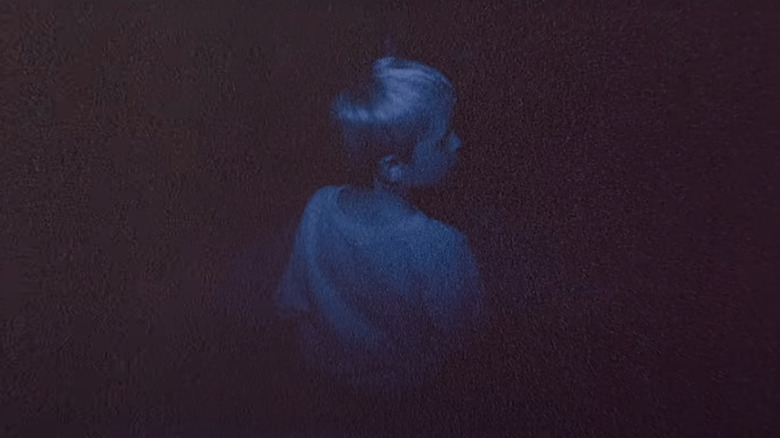
This might be the most common interpretation of the movie. At the start, the kids’ father can be heard telling someone on the phone that Kevin fell down the stairs but was, “Fine” and, “Didn’t need stitches.” Shortly after this, the nightmare begins and we’re left to wonder just how “fine” Kevin really was.
Redditor “DCBBF68” suggested that, rather than being in hell, “Kevin isn’t dead so much as his brain is slowly dying,” and we’re witnessing the slow degradation of his mind — hence the increasingly surreal imagery. Other Redditors have reached similar conclusions. According to “Termmie,” Kevin “goes comatose after [the] incident, and we stay inside his comatose dream for 574 days.” The child eventually “forgets the layout of his house until he can only remember the TV. He forgets what human faces look like. Eventually he forgets his name.” At the end of the movie, a barely distinguishable face emerges from the darkness. Kevin asks its name, only for it to reply with the same question. We don’t hear Kevin answer — hence the idea that his comatose mind has been fully depersonalized.
The coma theory is one of the more likely alternatives, but as “DCBBF68” points out, it would require that Kaylee is merely a figment of Kevin’s deteriorating mind, rather than an autonomous character — “Things happen to her when Kevin isn’t there,” suggesting she and Kevin are going through the same experience, therefore it can’t simply be taking place solely in Kevin’s mind. Whether it’s just Kevin or both he and his sister, the whole thing is not only incredibly creepy, it’s devastatingly sad in the sense that this quintessential evil is being visited upon two young children incapable of grasping the enormity of it all.
A Metaphor For An Abusive Home
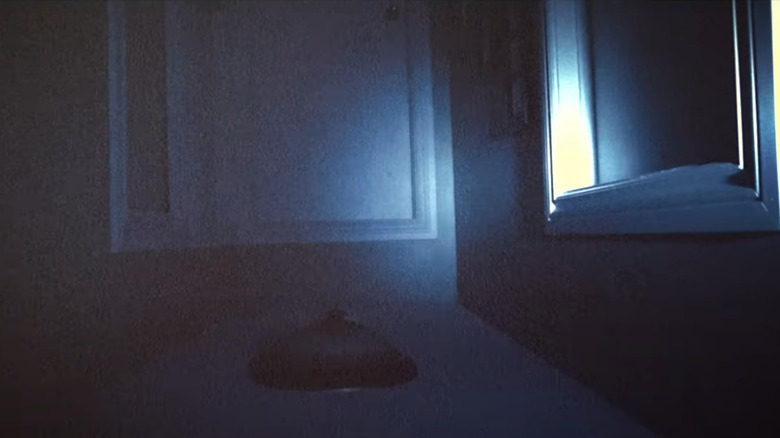
At the very least, it seems Kevin hurting himself is one of the few things in “Skinamarink” that actually happened in reality. But why? Was it as simple as he was sleepwalking and fell down the stairs or is there something more sinister to it? Well, according to multiple theorists, the whole thing is actually an allegory for living in an abusive home.
As Signal Horizo,’s Tracy Palmer sees it, “Skinamarink” is “highly metaphorical,” although Kevin did fall down the stairs and “is likely not okay.” Tying into the coma theory, Palmer’s interpretation sees the film as “The imagined nightmare of a damaged mind,” wherein either Kevin’s mother was possibly a child abuser, hence the “horrible crunching noise” heard when she appears in the house and starts talking to Kevin.
Elsewhere, Redditor “rednoise” noticed how the entire experience mimics a child dealing with the effects of abuse:
“There’s subtext of parental abuse and neglect that leads to a kid’s injury or death, the feeling of being violated in a space where you are supposed to feel safe — your home, wanting to sink into cartoons to escape the apparent terror around you, hallucinations, loss of support and abandonment. All of those things are present here, are swirling around in the air, never explicitly said but, if you’ve been put in that position while you were a kid … you’ll understand it.”
The voice that first starts speaking to the children from the darkness is male, and becomes increasingly warped and sinister as the movie goes on, perhaps mimicking their own perception of the father as they go from seeing him as a carer to recognizing him as an abuser.
Divorce
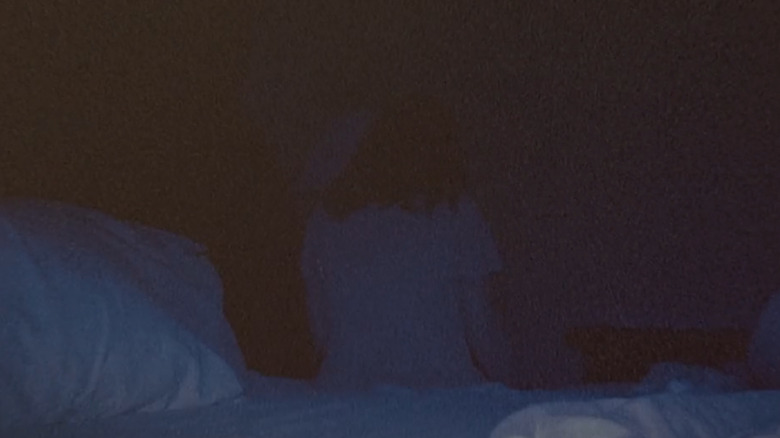
Tied into the abuse theory, is the idea of “Skinamarink” being an allegory for divorce and its devastating effects on a family. As our friend “DCBBF68” sees it:
“What happens in the individual scenes matter less in a literal sense than in their implication. The home is turned upside down. Kaylee disappears (kids are split up during a custody battle). ‘Your father and I love you very much.’ Again, the line between what is literally happening and what is being evoked is intentionally blurred.”
This is actually quite a widespread interpretation of “Skinamarink” — that the whole thing is a metaphor for how divorce and abuse can turn a family’s life upside down. As the esteemed “BeatBoxOnYourCooch” puts it, “There is a pending divorce between mom and dad, and this hour and forty-minute long fever dream is pretty much the kids rationalizing the divorce.”
In this view, the disappearing doors and windows represent the children feeling trapped as they “watch their family fall apart.” The disappearing objects represent the parents “dividing their belongings” and even Kevin’s injury could have been used by his mother, “As proof of negligence” to gain custody of the children, hence why they both slowly disappear along with the image of their mom. “BeatBox,” you might just be on to something there.
Monster Mom
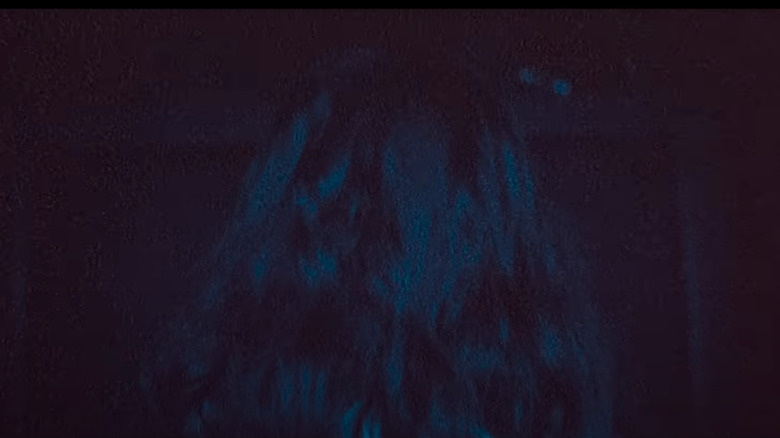
Redditor “Perfect_Surprise_643” backed up the divorce interpretation, taking things further by supposing that the “Entity may be some sort of metaphor for the mother herself.” Specifically, they noticed how the way the dad, “Spoke on the phone sounds like how a parent speaks to a co-parent (a divorced spouse).” “Perfect_Surprise” might have stumbled on a shrewd insight here, noting how “the children only called out for their father when things started getting weird,” and that in the bedroom scene, where the mom says, “We love you and Kevin very much,” she sounds how a parent might when they “tell their children they are getting a divorce.” The parents are also sitting facing away from each other on the bed, as if reeling from a devastating revelation of some irredeemable betrayal — possibly by the mother.
All of this is backed up by the way Kaylee says earlier in the film that she doesn’t “want to talk about mom,” which implies she’s either missing her mother too much to confront her memory, mad at her mom for doing something, or too scared to talk about her. The being that appears in the film’s closing moments certainly appears to be feminine, though it’s really tough to make out any details. And although the sinister voice that beckons to the kids throughout mostly sounds like a man, it’s nonetheless an intriguing idea that the mother is actually The Monster. This adds an extra level of horror to the aforementioned blood on the carpet scene that loops over and over before Kevin yells “Mommy.” Rather than calling for help, could it be that he’s actually calling the name of his tormentor? The levels of darkness on display throughout this film really are, like Kevin’s nightmare experience, seemingly endless.
Unavoidable Tragedy
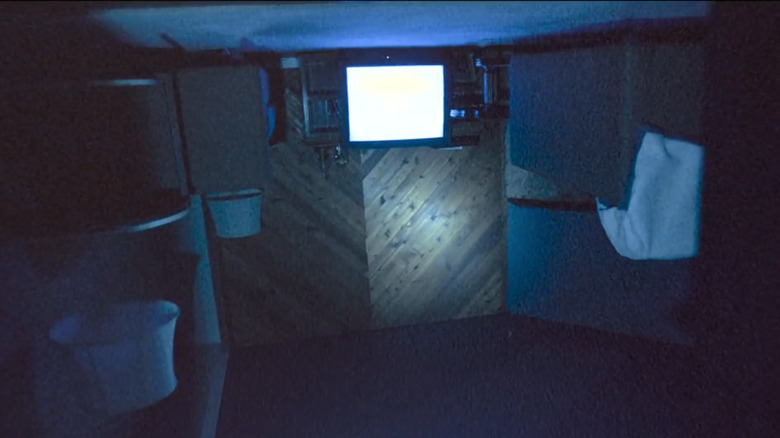
Just when you think things couldn’t get any bleaker, they do. There’s plenty of theories as to what’s happening in “Skinamarink,” especially surrounding Kevin’s fall down the stairs and whether it was fatal, put him in a coma, or caused some concussion-induced fever dream. But “Termmie” decided to add to the abject misery of the whole thing by suggesting that Kevin really did fall down the stairs “by accident.” In and of itself, this isn’t worse than Kevin’s injury being the result of abuse, but consider the way “Terrmie” explains the implications:
“No foul play. Nothing. Just an innocent accident that maybe could’ve been prevented. Imagine the horror of living everyday as the parents with that guilt and loss, that YOU did nothing wrong […] Now imagine, being in a coma … living inside somewhere between consciousness and unconsciousness … for a year … having no control over what terrors your brain will make for you … forcing you to live inside a living nightmare … having no ability to wake up because you have no control over your body … all because of an innocent fall. There is no reason or justification for tragedy. People think there has to be a reason for suffering. there isn’t. That’s the horror”
Well, there ya go. Just when you didn’t think anything could top the gut-wrenching horror of watching “Skinamarink,” Reddit delivers the coup de gras. Bravo, “Termmie.”
Honorable Mentions
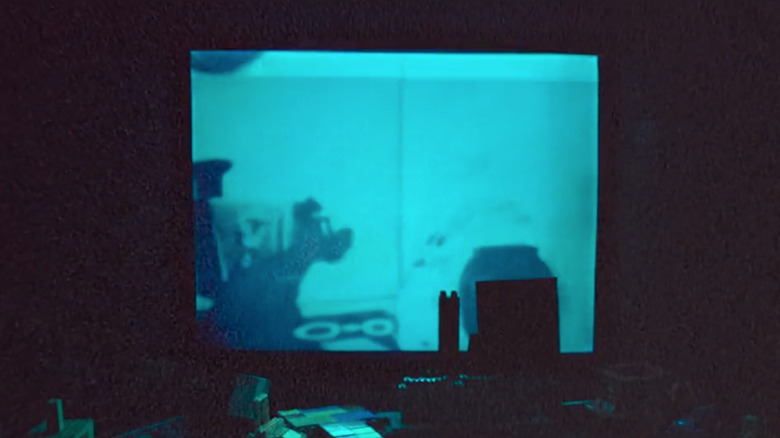
Everything mentioned here is, believe it or not, the tip of the iceberg. The internet is strewn with theories in the wake of “Skinamarink,” all trying to unpack what the film is trying to say, represent, or explore. One that deserves an honorable mention comes from Redditor “KidSickarus,” who contends, “The Monster is the filmmaker,” i.e. Ball, who is playing, “Inexplicable tricks that can only be achieved through editing: things on the ceiling, changing faces, disappearing doors and windows.” By the end, The Monster has “gleefully guided Kevin through the house and dictated his actions,” which can be interpreted as, “The director having fun guiding the story. He can make Kevin gouge his eye out. He can take away Kaylee’s eyes and mouth.” It’s a novel take but the parallels between the all-powerful Monster and the director with a singular vision are clearly there.
There’s also the possibility that while doll house metaphors and dramatizations of hell are great, Ball may have just made a kind of “Paranormal Activity” with analog horror vibes. On that more basic level, “Skinamarink” can be seen as a straight-up story of the paranormal, with The Monster being some sort of poltergeist-type entity who’s entered the family home to wreak havoc. Given everything we’ve seen thus far — the revelations in “Heck,” the obvious allusions to something sinister going on with the family, the analog horror foundations which heavily rely on perverse nostalgia and liminality — I don’t think it is the case that “Skinamarink” is just a straight ghost story. But even if it was, it would be a truly chilling one.
What Is Going On In Skinamarink?
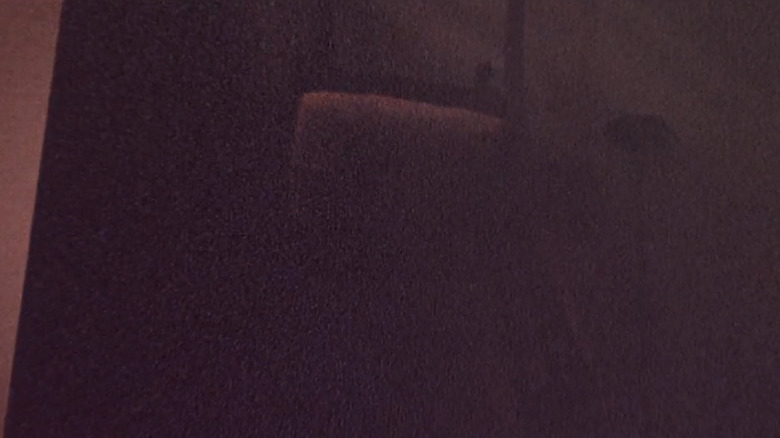
Speaking to Jezebel, Ball seemingly confirmed there was more to “Skinamarink” than meets the eye (or ears, or depths of your soul). The director revealed he had “devised backstories” for the parents but is preferring to keep quiet on what exactly those stories are:
“I’m only going to hint at what it is, because I want the viewer to make up their own stuff in their minds. I want to grant that the audience has a brain and can be imaginative and can put the pieces together. I like it when movies don’t 100 percent always tell us what’s going on and let us get in our own head about things.”
As far as wanting viewers to “make up their own stuff” goes — mission accomplished. Ball has expertly skirted the line between clear narrative and ambiguity to provoke his audiences’ imagination in a way that has, evidently, led to an array of insightful and thought-provoking “Skinamarink” theories.
And while he’s rightly remaining tight-lipped when it comes to offering his own explanation, one hint he did drop was that, “If people pay attention, they see it’s basically a Hansel and Gretel story.” It’s not much, but it suggests the theory of the mom being The Monster might have something to it, in the sense that she could be the witch. It also suggests that this isn’t just Kevin’s mind we’re witnessing — that he and Kaylee are enduring the experience together, just like the siblings in the classic Brothers Grimm fairytale. But most importantly, it might offer the only sliver of hope that exists anywhere in the endlessly fascinating nightmare that is “Skinamarink” and the discourse surrounding it: in the end, Hansel and Gretel kill the witch and escape.
Read this next: Horror Movies You Don’t Want To Miss In 2023
The post What the Heck is Going in Skinamarink: The Internet’s Wildest Theories appeared first on /Film.

